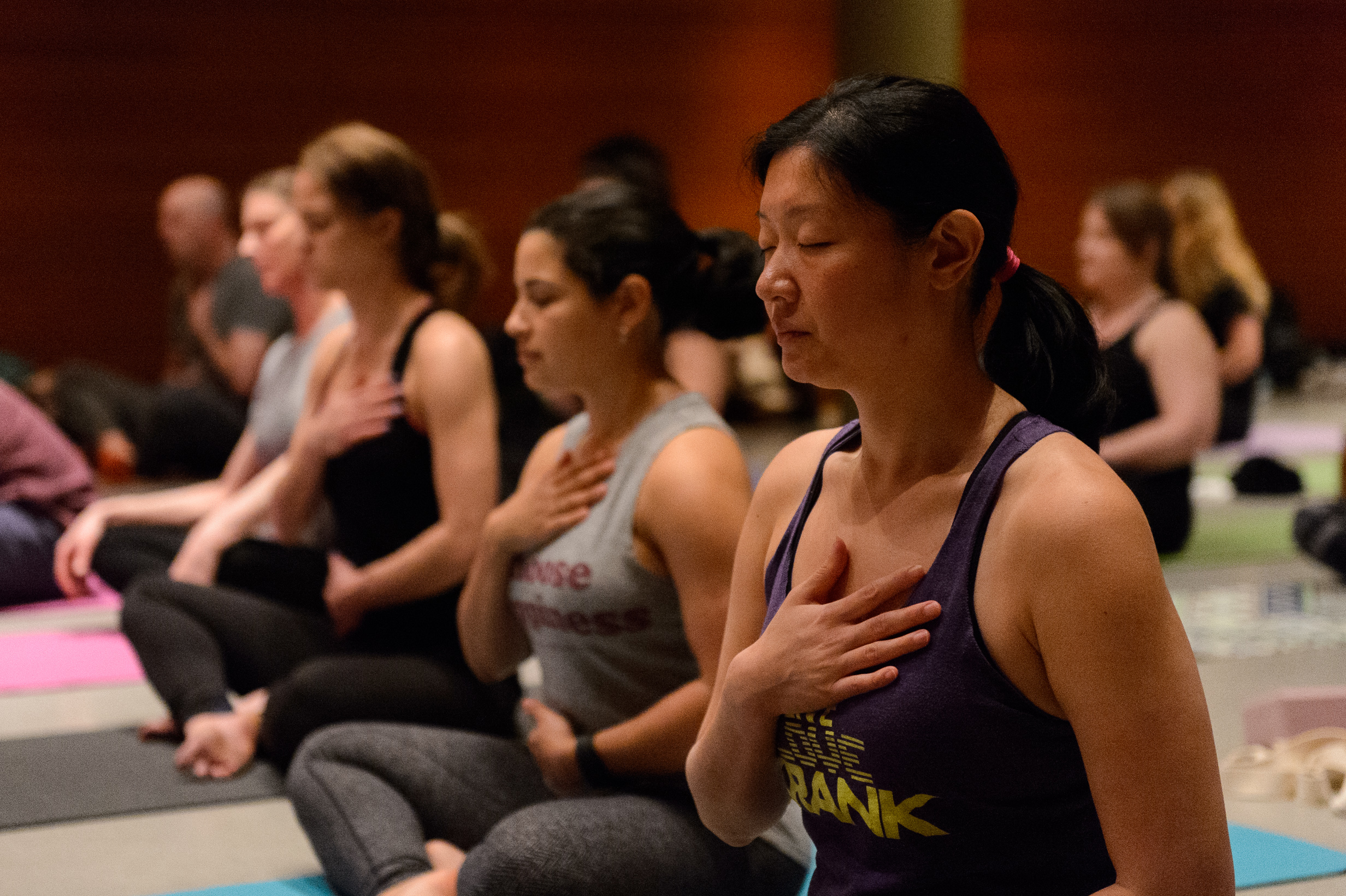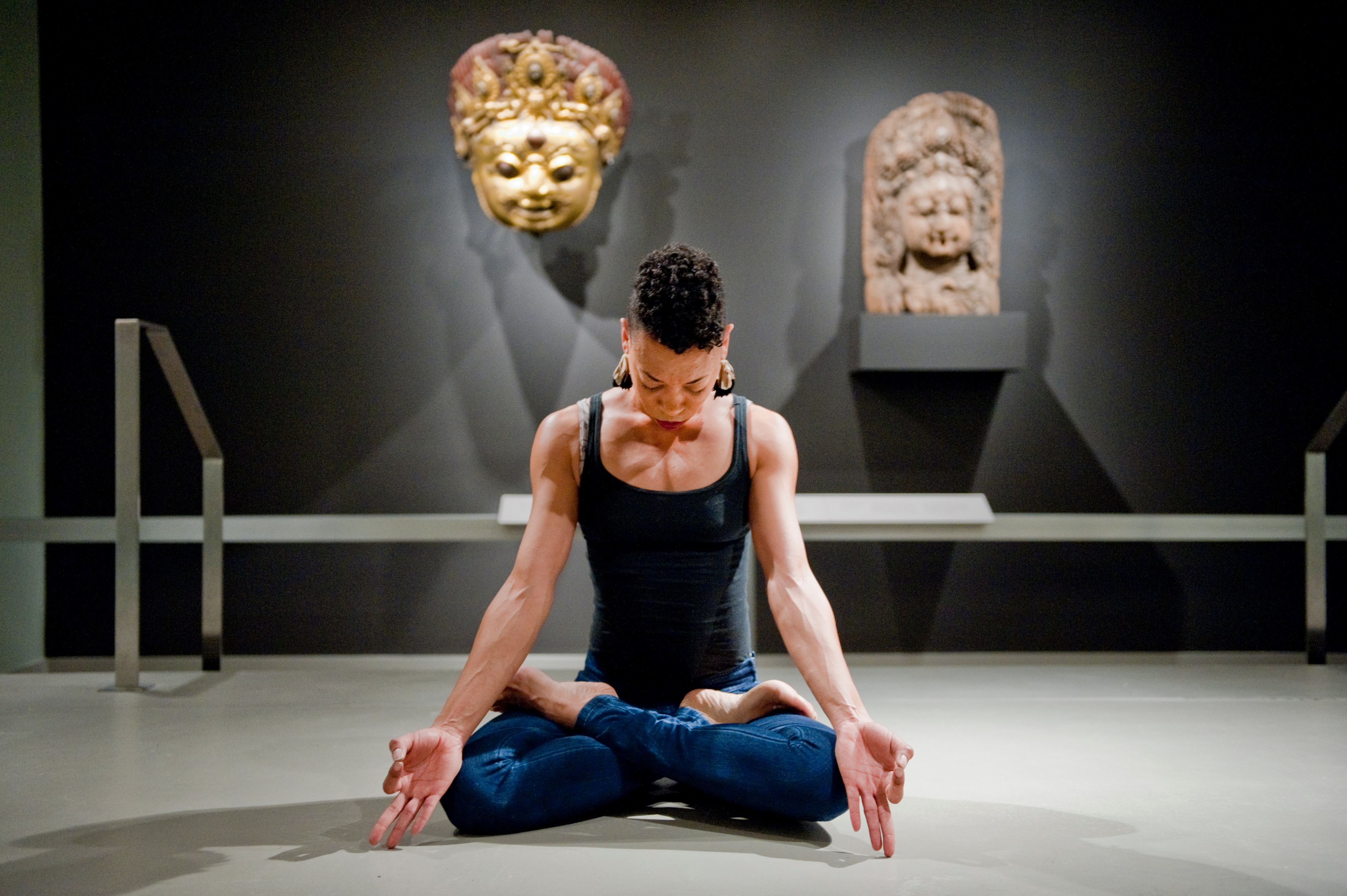
Sitting on a cold stone floor, the scent of patchouli filling my nostrils, I tried to concentrate on creating a carapace of nothingness—to still the incessant and inane thoughts in my head. A scrolling to-do list, punctuated by emails, food and items of clothing I wanted to buy kept surfacing, alongside a vague niggling about an old and unpleasant social interaction. Was this really my mind? As a Chinese poet once had it, it’s all very well going off in search of adventures, but you might return and find no-one at home.
I have attended countless meditation sessions—often at the London Buddhist Centre, where the atmosphere is more Tinder than zazen. I can’t say it’s worked for me, my sitting bones usually cave if my mind doesn’t. But contemporary artists swear by it—what’s the appeal? And why is it so conducive to creativity?
“The impetus behind some art-making has, for a long time, been similar to the goals of meditation: to reach a new level of consciousness”
The ancient practice of meditation has been traced back to Hindu traditions around 1500 BCE, developing between Hindus and Buddhists, with various techniques and theories, a mental and physical exercise with the aim of heightening our spirituality and transcending the thinking prison of the self. Entering the mainstream in Europe and the US as part of a right-on revolution in the 1960s and 1970s, meditation is, in this day and age, available as an app. Its appeal to today’s Western urbanite is obvious—the promise of a clear, calm and stable mind, the ability to be more productive and magically less stressed.

The impetus behind some art-making has, for a long time, been similar to the goals of meditation: to reach a new level of consciousness. Buddhist monks in Tibet famously use art as a form of meditation, by creating painstaking mandalas from coloured grains of sand, that take weeks to lay out, and are then destroyed in a ritual ceremony, eventually releasing the sand back to nature. Their fastidious methods are not unlike Yayoi Kusama’s treatment of polka dots—a way to obliterate the self into infinity—a common goal shared between Zen Buddhism and psychedelic culture, equally attractive for artists with ego struggles.
The relationship between art practices and meditation is well-established: the physical rhythm of meditation according to some techniques, the counting, the asanas, the hours of silence, relate closely to the solitary, intensely inward, prolonged periods of concentration of painters, while performance art can be seen as a contemporary form of ritual, and installations, from James Turrell to Yoko Ono, an attempt to immerse us in the mystery of the present; nothing more, nothing beyond.
Museums and galleries, silent and static, have also become spaces for the practice, with gong baths led by mystic Laraaji and healing sessions by artist Tabita Rezaire at the Serpentine, and meditation sessions at the National Portrait Gallery given by artist duo Walter and Zoniel. At the Rubin Museum in New York, there’s an ongoing programme of meditation, alongside yoga lessons, healing and talks on compassionate action, all taking place among Buddhist artworks and exhibitions. This month is the same month of the global gallery initiative, Slow Art Day, encouraging people to switch off and tune in to art, in a similar way we might focus on a shrine or mantra.

“Meditation is the journey from sound to silence, from movement to stillness, from limited identity to unlimited space,” said Sri Sri Ravi Shankar of the practice. The attraction of meditation is to free the mind from the mundane and earthly—and, reaching this elevated consciousness, finding a creative apex. Artists are directly introducing meditation practices and techniques into their work to explore its potential for boundless creativity. Filmmaker David Lynch is the self-styled guru of transcendental meditation for the world of art and culture. His relationship with the practice is long-standing, and began in 1973—since then, he claims, he has meditated every single day, twice a day. So sure of the power of meditation, his charity, the David Lynch Foundation for Consciousness-Based Education and World Peace, in operation since 2005, promotes transcendental meditation for the next generation. “It has given me effortless access to unlimited reserves of energy, creativity and happiness deep within,” he says.
Coming out of the new-age spiritual area, as Asian traditions migrated west and became part of the culture, creatives like Taiwanese performance artist Tehching Hsieh began to propose “freethinking” and introduced extreme endurance methods as a form of provocative and political performance art. At the same time in Europe, Marina Abramović’s quasi-spiritual, ritualistic performances have aligned with meditation methods, using endurance for self-awareness since the 1970s: focusing on the suffering of the physical, bodily experience as a way to free the mind. Repetition and the suspension of time are consistent in her performances, and her most famous work, The Artist Is Present (2010), saw her sitting, Buddha-like, opposite visitors for a total of 736 and a half hours; a Vipassana-like experience. The Abramovic Method—exercises for concentration and self-reflection Abramovic has honed and teaches—is meditation as a performative art.

More recently in London, the French-British artist Alice Anderson choreographed a rapturous performance with dancers and drumming, Transitional Dances at Waddington Custot. Guests were mesmerized by the movement and rhythm—Anderson showing us how much the role of an artist can be like that of a shaman. Interested in how such states can be reached in a digitally-perfected world, her current exhibition at Waddington Custot explores ritual and meditation through sculptural objects and drawings as well as performance—inspired by research into the traditional rituals and ceremonies of the Indiens Kogi community, living in the Sierra Nevada de Santa Maria, in Colombia. The noisier the world gets, and the more inescapable the noise becomes—after all, there’s now wifi in the middle of the desert and at various points on Everest—the greater our need to find inner peace and tranquility. There is a spiritual impulse to Anderson’s work, something that’s missing in an increasingly secular, post-postmodern society.
Art can be a modern kind of meditation, where wisdom lies in letting go. After all, as the Zen monk, Shunryū Suzuki would have it: “Life is like stepping onto a boat which is about to sail out to sea and sink.”





